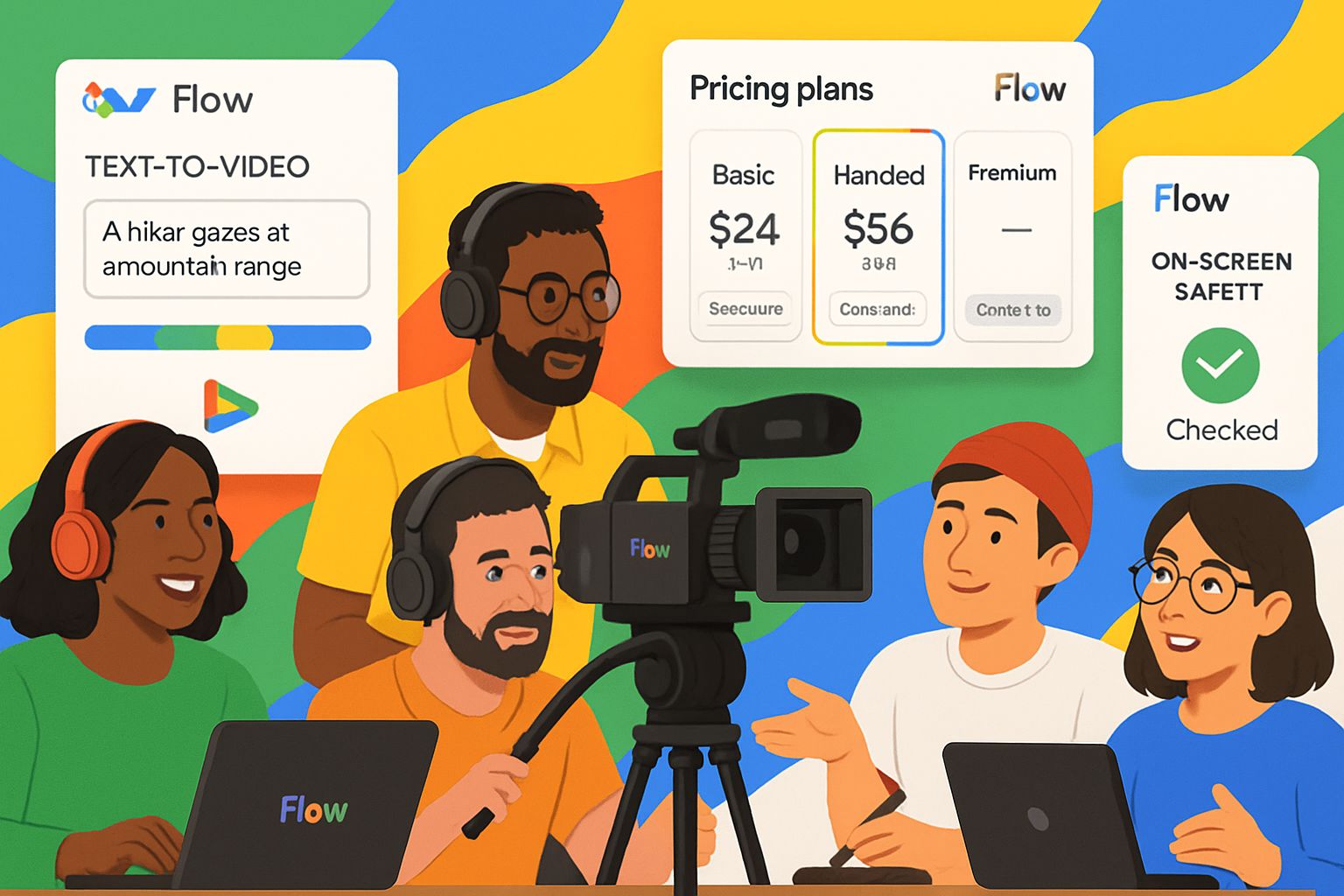
AI CERTS
13 hours ago
Google Flow: AI video production platform reshapes filmmaking
This article unpacks the suite’s features, pricing, benefits, and controversies for professional creators. Consequently, readers will understand how Flow compares within a crowded generative video landscape. Examples, statistics, and expert quotes ground each insight. Furthermore, we outline certification paths that strengthen creative skills alongside emerging AI workflows. Let’s explore why Google believes Flow can redefine digital filmmaking.
Flow Suite Product Overview
Flow orchestrates three flagship models: Veo for video, Imagen for imagery, and Gemini for conversational guidance. Therefore, users describe prompts, receive instant clips, and refine them within one canvas. Natural-language camera controls allow pans, tilts, or dolly moves that previously demanded physical rigs. Meanwhile, the workspace preserves every generated asset as reusable “ingredients,” encouraging consistent storytelling across scenes. Flow’s workspace aspires to become the default video production platform for digital storytellers. These fundamentals position Flow as Google’s most ambitious creative software to date.

Flow combines multiple models and unified controls, streamlining ideation and assembly. Next, the suite’s generative capabilities deserve closer inspection.
Key Generative Features
Flow’s toolset targets speed, precision, and consistency.
- Veo 3 outputs 1080p clips with synchronized audio and improved physics.
- SceneBuilder extends shots, stitches sequences, and manages continuity edits.
- Prompted camera moves enable precise framing, depth, and motion effects.
- SynthID watermarking adds invisible provenance while preserving visual quality.
Additionally, creators shift between text-to-video, ingredients-to-video, and frames-to-video pipelines without leaving the interface. Gemini analyzes prompts and suggests shot lists, ensuring narrative coherence across multiple clips. Consequently, early testers report faster previsualization cycles and reduced reshoot requirements.
The feature set emphasizes flexibility, realism, and safety controls. Pricing tiers clarify how much generation power professionals receive.
Pricing And Access Tiers
Google offers Flow through two subscription plans inside its broader AI offerings. Google AI Pro costs $19.99 monthly and grants 100 generations through the bundled AI Credits system. Google AI Ultra charges $249.99 monthly, offering higher limits and early Veo updates. Moreover, creators can perform top-up purchases when monthly credits run short. In contrast, top-up purchases accommodate unexpected campaign spikes without tier upgrades. Every render subtracts credits, promoting mindful generation during iterative workflows. Flow currently serves U.S. customers, yet international expansion is planned after policy reviews. Each plan dictates how deeply teams can leverage the video production platform during demanding schedules. The AI Credits system converts creative ambition directly into measurable spend.
Subscription design ties usage directly to predictable budgets and scalable output. Market forces shed light on why Google selected this strategy.
Market Impact And Context
PwC forecasts generative media revenue growth in the high-20s percent annually through 2028. Consequently, big tech firms race to own creative pipelines. OpenAI’s Sora, Runway Gen-2, and Synthesia form the competitive set against Flow. In contrast, Google links Flow with YouTube, Drive, and Gemini, creating an ecosystem moat. Analysts expect integrated distribution to influence professional adoption, especially among advertising agencies.
Key industry numbers include:
- AI video market currently sits between $0.9 and $2.3 billion, according to Market.us.
- Technavio projects 30% compound growth for text-to-video tools over five years.
- PwC notes 75% of media executives plan AI investments for content workflows.
Therefore, Flow launches into receptive yet contested terrain. Analysts suggest that whichever video production platform integrates distribution will capture the marketing spend.
Market data confirms rising demand and fierce competition. Understanding tangible creator benefits clarifies Flow’s appeal.
Benefits For Creative Teams
Indie directors often juggle limited budgets and tight schedules. Flow’s prompt interface accelerates storyboarding and visual exploration within minutes. Furthermore, ingredients-to-video workflows preserve characters across shots, reducing continuity headaches. Frames-to-video editing extends scenes without re-shooting live footage, saving crew costs. Moreover, text-to-video generation supports concept tests before expensive set construction. Primordial Soup combined live action with Veo visuals to produce "Ancestra" for Tribeca. For small studios, adopting a cloud video production platform removes expensive hardware constraints. Team members collaborate asynchronously inside the video production platform through shared ingredient libraries. Creatives can boost expertise through the AI Design certification.
Speed, cost savings, and skill development drive creator enthusiasm. Yet no technology arrives without risk.
Ongoing Risks And Safeguards
Deepfakes and misinformation remain pressing threats for generative video. Google embeds SynthID watermarks and C2PA metadata to deter misuse. Nevertheless, researchers warn that heavy edits can weaken detection signals. Copyright litigation also looms because training data sources stay partially opaque. Labor unions negotiate clauses that protect performer likeness and mandate human oversight. Consequently, Google currently limits Flow clip length and gradually expands creator access. The AI Credits system further curbs mass automated output by attaching direct cost. Moreover, Google reserves the right to revoke access after policy violations, reinforcing guardrails. Yet any video production platform that scales must address rights management transparently.
Safeguards exist but gaps persist, demanding ongoing vigilance. Final reflections underscore future considerations.
Conclusion And Next Steps
Google Flow consolidates generative power, ecosystem integration, and subscription flexibility into a single video production platform. Moreover, text-to-video, ingredients-to-video, and frames-to-video pipelines grant creators unprecedented agility. Competitive pricing, especially with top-up purchases, broadens access while protecting margins. Nevertheless, ethical, legal, and labor concerns will shape adoption curves. Therefore, studios must blend technical excitement with responsible governance. Professionals should monitor feature updates, union negotiations, and watermarking robustness over coming months. Consequently, now is an ideal moment to experiment, upskill, and future-proof creative careers. Embrace the video production platform revolution and shape storytelling’s next chapter. Explore Flow, evaluate safeguards, and consider earning the AI Design certification to lead this transformation.



